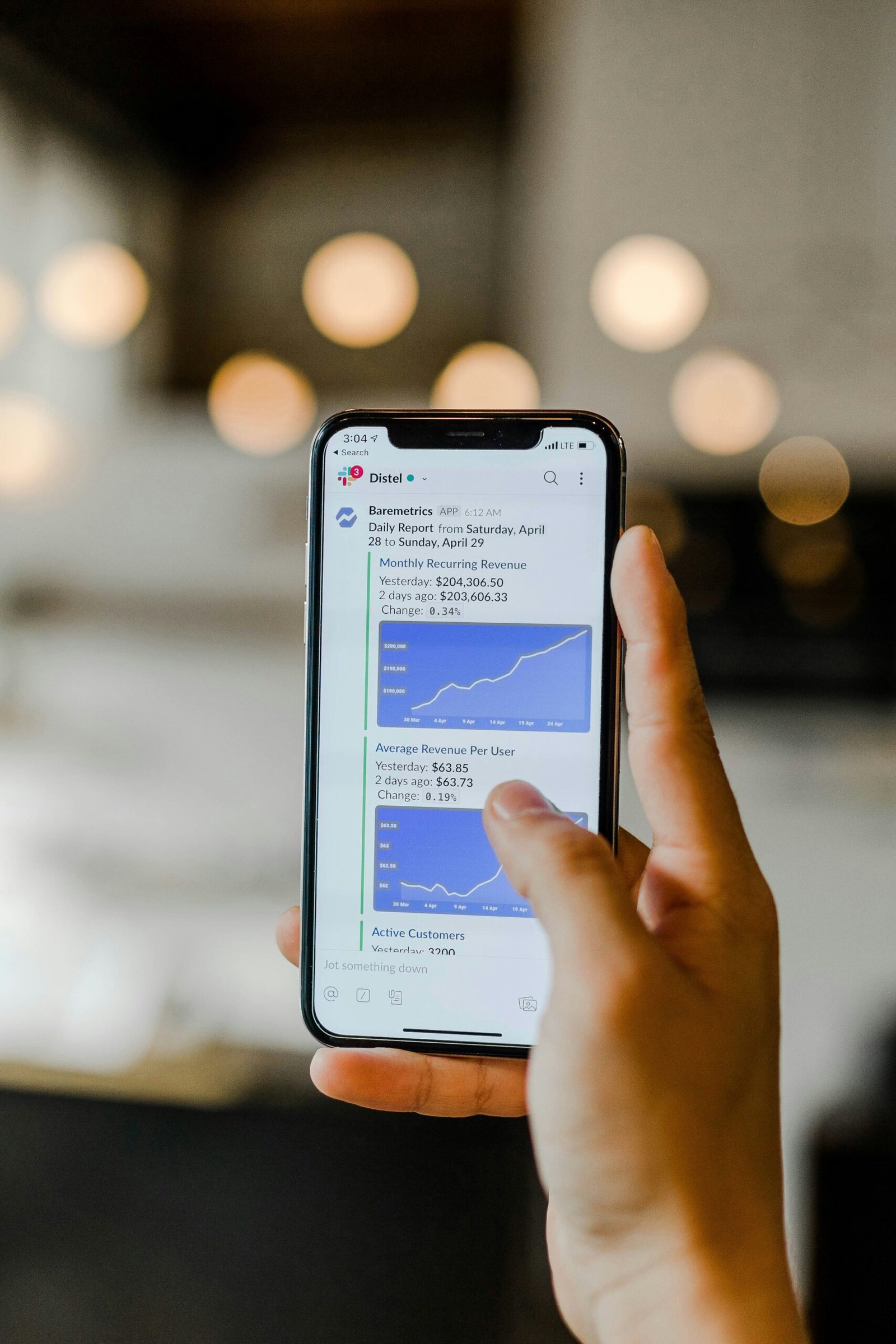Creating a Secure DIY Crypto Trading Bot
Introduction to Crypto Trading Bots
Crypto trading bots are automated software programs designed to interact with cryptocurrency exchanges and execute trades on behalf of the user. They leverage algorithms and predefined trading strategies to make decisions, aiming to maximize profit and minimize risk. These bots work by analyzing market data, identifying trading opportunities, and executing trades based on the programmed logic, without human intervention.
One of the primary benefits of using crypto trading bots is their ability to operate 24/7. Unlike human traders, bots do not require rest and can monitor the market continuously, ensuring that trading opportunities are never missed. This round-the-clock functionality is particularly advantageous in the highly volatile cryptocurrency market, where prices can change rapidly and unpredictably.
Moreover, crypto trading bots eliminate the emotional aspect of trading. Human traders are often influenced by emotions such as fear and greed, which can lead to irrational decisions and significant financial losses. Bots, on the other hand, base their decisions purely on data and predefined rules, ensuring a more disciplined and objective approach to trading.
Another significant advantage of using trading bots is their ability to process large amounts of data quickly and accurately. In the fast-paced world of cryptocurrency trading, being able to swiftly analyze market trends, historical data, and other relevant information is crucial. Bots can handle these tasks efficiently, providing users with real-time insights and enabling them to make informed trading decisions.
In summary, crypto trading bots offer a range of benefits that can enhance trading performance in the cryptocurrency market. Their ability to operate continuously, make emotionless decisions, and process data rapidly makes them a valuable tool for both novice and experienced traders. By leveraging these automated systems, traders can optimize their strategies, reduce risks, and potentially increase their profits.
Planning Your Bot: Strategy and Requirements
Before diving into the development of your DIY crypto trading bot, it is crucial to lay a solid foundation through meticulous planning. The initial step involves formulating a clear and robust trading strategy. Whether your approach is based on technical analysis, fundamental analysis, or a combination of both, having well-defined objectives will guide the bot’s decision-making process. Identifying the specific market conditions under which your bot will operate can significantly enhance its effectiveness.
Equally important is understanding the technical requirements necessary to bring your crypto trading bot to life. Proficiency in programming languages such as Python, JavaScript, or C++ is essential. These languages are commonly used due to their robust libraries and frameworks that facilitate the development of trading algorithms. Moreover, familiarity with Application Programming Interfaces (APIs) is a must. APIs allow your bot to interact with cryptocurrency exchanges, retrieving real-time market data and executing trades seamlessly.
In addition to technical skills, a comprehensive understanding of trading principles is indispensable. This includes knowledge of market indicators, trading signals, risk management techniques, and the ability to analyze historical data. Understanding these concepts will enable you to design a bot that can navigate the complexities of the cryptocurrency market, making informed and effective trading decisions.
Thorough planning is not just about setting objectives and acquiring technical skills; it also encompasses ensuring the security and reliability of your trading bot. Cryptocurrencies are highly susceptible to market volatility and cyber threats. Therefore, incorporating security measures such as encryption, secure API keys management, and regular software updates is paramount. By prioritizing security, you can protect your investments and ensure the long-term viability of your trading bot.
In conclusion, the success of your DIY crypto trading bot hinges on a well-thought-out plan. By clearly defining your trading strategy, acquiring the necessary technical skills, and prioritizing security, you lay the groundwork for a bot that is both effective and secure in navigating the dynamic world of cryptocurrency trading.
Choosing the Right Programming Language and Tools
When creating a secure DIY crypto trading bot, the selection of the right programming language is paramount. Each language offers unique benefits and challenges, especially in the highly dynamic environment of cryptocurrency trading. A few of the most popular options include Python, JavaScript, and C++.
Python is often the go-to language for crypto trading bots due to its simplicity and extensive libraries. Its readability and ease of use make it accessible even to beginners. Furthermore, Python boasts robust support for scientific computing and data analysis, essential for developing sophisticated trading algorithms. Key libraries, such as ccxt for API integration and TA-Lib for technical analysis, streamline the development process. However, Python’s performance might lag compared to compiled languages, which could be a drawback in high-frequency trading scenarios.
JavaScript, particularly with Node.js, is another viable option. Its asynchronous nature allows for efficient handling of multiple tasks, which is beneficial for real-time trading applications. JavaScript also integrates seamlessly with web technologies, making it a solid choice for developing web-based trading interfaces. However, it lacks the extensive financial libraries available in Python, potentially requiring more custom development.
C++ is renowned for its performance and efficiency, making it ideal for high-frequency trading bots where execution speed is critical. Its memory management capabilities ensure optimal performance, even under heavy computational loads. However, C++ has a steeper learning curve and longer development time, which may not be suitable for those new to programming or looking for rapid prototyping.
Choosing the right tools is equally important. Beyond ccxt and TA-Lib, backtesting frameworks like Backtrader or QuantConnect are crucial for testing strategies against historical data. These tools enable developers to refine their algorithms and improve their bot’s performance before deploying it in live markets.
Ultimately, the choice of programming language and tools should align with your specific needs, trading strategy, and technical proficiency. Balancing ease of use with performance and available resources will guide you towards the most suitable options for your DIY crypto trading bot project.
Setting Up Secure API Connections
In the realm of cryptocurrency trading, API keys serve as crucial connectors between your DIY crypto trading bot and various cryptocurrency exchanges. These keys allow your bot to interact with the exchange’s server, performing functions such as placing orders, retrieving market data, and managing account balances. Given the sensitive nature of these operations, securing API keys is paramount to maintaining the integrity and security of your trading activities.
To obtain API keys from popular exchanges like Binance, Coinbase, and Kraken, users must first create an account and complete any necessary verification processes. Once logged in, navigate to the API management section of the exchange. Here, users can generate new API keys, which typically consist of a public key and a secret key. It is essential to store these keys securely, as unauthorized access to them can result in significant financial losses.
Best practices for securing API keys include the use of environment variables and encryption. Environment variables allow for the secure storage of API keys outside of the source code, minimizing the risk of accidental exposure. For instance, in a Python environment, you can use the os module to access environment variables:
import osapi_key = os.getenv('API_KEY')Additionally, encryption tools such as pycryptodome can further protect API keys by encrypting them before storage. Limiting API key permissions is another critical aspect of security. Exchanges often allow users to specify permissions for each key, such as restricting access to read-only functions or limiting the ability to withdraw funds. By granting the minimum necessary permissions, you can reduce the potential impact of a compromised key.
Furthermore, consider implementing IP whitelisting, which restricts API access to specific IP addresses. This adds an additional layer of security, ensuring that only requests from trusted sources are processed. Regularly reviewing and rotating API keys can also help mitigate risks associated with long-term key exposure.
By adhering to these best practices, you can significantly enhance the security of your DIY crypto trading bot, safeguarding your assets and ensuring the smooth operation of your trading activities.
Developing the Bot: Core Components
Creating a secure DIY crypto trading bot involves a meticulous approach to its core components: market data collection, signal generation, and order execution. Each component plays a vital role in the bot’s overall functionality, ensuring it operates efficiently and securely within the dynamic cryptocurrency market.
The first essential component is market data collection. This involves obtaining real-time data from various cryptocurrency exchanges. APIs provided by these exchanges are the primary sources for market data, which includes information on price, volume, and order book depth. Implementing robust error handling and data validation mechanisms is crucial to ensure the integrity and reliability of the collected data. Additionally, using asynchronous programming techniques can enhance the efficiency of data collection, allowing the bot to process multiple data streams concurrently.
Signal generation, the next core component, involves analyzing the collected market data to identify potential trading opportunities. This step typically leverages various technical indicators, such as moving averages, relative strength index (RSI), and Bollinger Bands, among others. Implementing a modular approach in writing the signal generation code is advisable. By creating separate modules for different indicators and strategies, you can easily test, modify, and scale your bot’s trading logic. Moreover, integrating machine learning models can offer advanced predictive capabilities, enhancing the bot’s decision-making process.
Order execution is the final critical component. This involves placing buy or sell orders on the exchange based on the signals generated. Ensuring secure and efficient order execution requires implementing authentication mechanisms, such as API keys and secrets, and rigorously following best practices for secure coding. Additionally, incorporating features like order confirmation and error handling will safeguard against potential execution failures or mismatches. Using a well-structured framework for order management, including functions for creating, canceling, and monitoring orders, can significantly simplify the codebase and improve maintainability.
Modularity is a cornerstone of developing a crypto trading bot. By organizing the code into distinct, reusable modules, you enhance both maintainability and scalability. This approach not only facilitates debugging and testing but also allows for seamless integration of new features and strategies. Ultimately, a modular, well-structured codebase will serve as a robust foundation for a secure and efficient crypto trading bot.
Implementing Security Measures
Implementing robust security measures is critical when developing a DIY crypto trading bot. Ensuring that the bot operates securely protects both the trading activities and sensitive data involved. One essential step in this process is the encryption of sensitive data. Utilizing strong encryption protocols, such as AES-256, for storing and transmitting sensitive information helps safeguard data from unauthorized access. Implementing encryption ensures that even if data is intercepted, it remains unintelligible to malicious actors.
Adhering to secure coding practices is another crucial aspect. Developers should follow best practices such as input validation, proper error handling, and avoiding hard-coded credentials within the bot’s code. Utilizing libraries and frameworks that have been tested for security vulnerabilities can also help mitigate potential risks. Moreover, performing regular code audits is paramount. Regularly reviewing the codebase for vulnerabilities helps identify and address potential security flaws before they can be exploited.
Firewalls and Virtual Private Networks (VPNs) play a vital role in fortifying the bot’s security. Firewalls act as a barrier between the bot and potential threats, filtering out malicious traffic. Implementing a VPN ensures that the bot’s communications are encrypted and routed through secure channels, minimizing the risk of data interception. This is particularly important when the bot connects to exchanges or other external services over the internet.
Keeping the bot updated is fundamental in maintaining security. Regularly applying patches and updates ensures that any newly discovered vulnerabilities are addressed promptly. Additionally, it’s important to monitor the bot’s operations continuously. Implementing logging and alerting mechanisms allows for the detection of suspicious activities and enables swift response to potential security incidents.
By integrating these security measures—encryption, secure coding practices, regular code audits, firewalls, VPNs, and continuous monitoring—developers can significantly enhance the security of their DIY crypto trading bots. This multi-layered approach helps protect against a wide range of threats, ensuring the bot operates securely and efficiently.
Testing and Optimization
Testing a DIY crypto trading bot in a controlled environment is a crucial step before deploying it live. This process ensures the bot performs as expected under various market conditions, mitigating risks associated with real-time trading. One effective method for preliminary testing is backtesting, which involves running the bot’s algorithm using historical market data. Backtesting helps in evaluating how the bot would have performed in past scenarios, providing insights into its potential effectiveness and shortcomings.
To start, select a comprehensive dataset that includes a range of market conditions, such as bull and bear markets, high and low volatility periods, and different time frames. This diversity allows for a thorough assessment of the bot’s strategy. When conducting backtesting, pay close attention to key performance metrics like profitability, drawdown, and the Sharpe ratio. These metrics offer a quantitative measure of the bot’s risk-adjusted returns and overall reliability.
Optimization is the next critical phase. Begin by refining the bot’s strategy based on backtesting results. Adjust parameters such as entry and exit points, stop-loss levels, and position sizing to enhance performance. Additionally, review and optimize the bot’s code for efficiency. Efficient code not only improves execution speed but also reduces the likelihood of errors during live trading. Implementing robust error handling and logging mechanisms can further enhance the bot’s reliability.
Continuous monitoring and adjustment are paramount once the bot is live. The cryptocurrency market is highly volatile and can change rapidly, making it essential to regularly review the bot’s performance and adjust its strategy accordingly. Setting up automated alerts and performance dashboards can help in tracking the bot’s activity and detecting any anomalies promptly. Regular updates to the bot’s algorithm and parameters ensure it remains adaptive to evolving market conditions.
In conclusion, thorough testing and optimization are indispensable for developing a secure and effective DIY crypto trading bot. By leveraging backtesting, optimizing strategy and code, and maintaining continuous monitoring, traders can enhance their bot’s performance and mitigate risks, paving the way for more reliable and profitable trading operations.
Deploying and Maintaining Your Bot
Deploying your DIY crypto trading bot into a live environment is a critical stage that requires meticulous planning and careful execution. First, ensure that your bot has been thoroughly tested in a simulated environment to identify and rectify any possible issues. Once you are confident in its performance, select a reliable cloud service provider, such as AWS, Google Cloud, or Azure, to host your bot. These platforms offer robust security features and scalability options, making them ideal for continuous operation.
After deployment, it is essential to set up comprehensive monitoring systems to track the performance of your bot in real-time. Utilize monitoring tools like Prometheus and Grafana to visualize key metrics such as latency, transaction volume, and error rates. Establishing alerts for anomalous behavior ensures that you can respond promptly to any issues that may arise. Regularly reviewing the bot’s logs will also help you understand its decision-making process and detect any irregular patterns.
Continuous operation of the bot hinges on effective maintenance practices. Schedule regular updates to the bot’s software to incorporate the latest security patches and feature enhancements. This is crucial in protecting the bot from new vulnerabilities and ensuring it operates efficiently. Automate these updates whenever possible to minimize downtime and human error.
Handling potential issues is an inherent part of maintaining a crypto trading bot. Develop a clear incident response plan that outlines the steps to take in case of unexpected failures or security breaches. Regularly back up your bot’s configuration and data to prevent loss in the event of a system crash. Additionally, ensure that you have a rollback strategy to revert to a stable version if a new update introduces unforeseen complications.
In essence, the deployment and maintenance of a crypto trading bot require a proactive approach. By adhering to best practices, such as rigorous monitoring, timely updates, and effective incident management, you can ensure the bot remains secure, efficient, and capable of adapting to the dynamic crypto market. Regular maintenance not only enhances the bot’s performance but also fortifies its resilience against potential threats.






